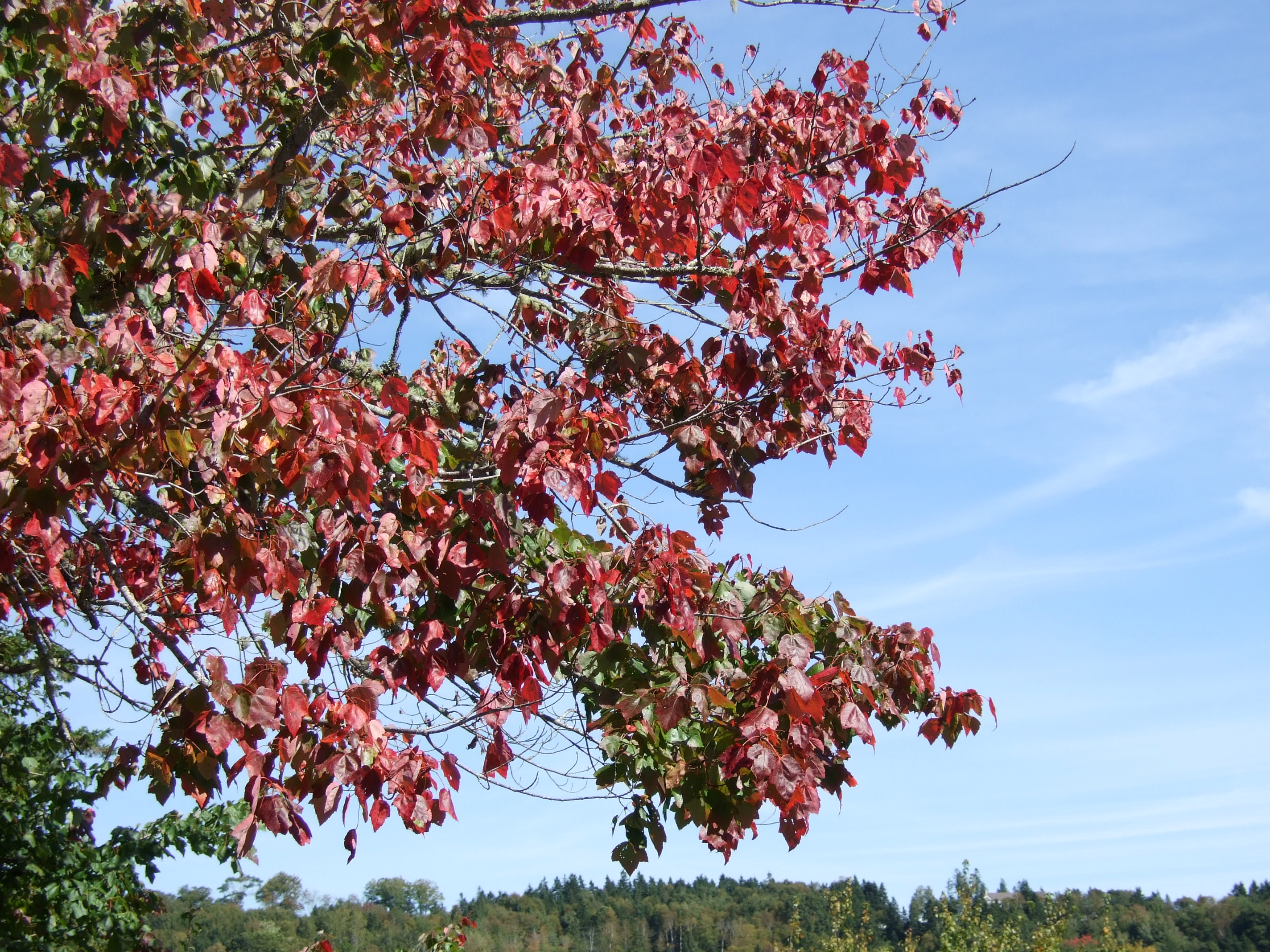More on Autumn Leaves
Having observed a rather rapid transition in the “red to dead” leaves in our area this year, one that resulted in a shorter period to enjoy nature’s autumn tapestry, I was intrigued by a couple of related articles in a recent issue of Dave’s Garden Weekly Newsletter. This is an excellent compendium of information, with contributions from professionals and amateurs many parts of North America. If you haven’t yet come across this site, you can find it at www.davesgarden.com. If you register (i.e. create an account, which is free) you will automatically receive the weekly newsletter.

The November 12 edition contains Carrie Lamont’s account as to Why Trees Lose their Leaves in the Fall. Her spritely approach combines clear information with clever illustrations, and provides a refresher course in the annual phenomenon that we all learned long ago in elementary school but are now hard-pressed to explain to another adult. Her basic thesis is that all plants first evolved in tropical climes when stems and fern-like leaves were sufficient to do the photosynthesis job. Later, evolution produced different plants which had broad flat leaves that were good for absorbing sunlight and for evaporation in warm air. As temperatures cooled, those leaves were eventually adapted to be disposable in times of cold and dry air (as in our winter conditions). That’s why, in our climate, leaves fall in the fall; and round out the cycle of life by enriching the soil where they fall, with nutrients for the very tree or shrub from which they had been cast off.

By scrolling down Dave’s newsletter you can find articles from previous days of the week. In this edition, they include other articles related to fall, like Gloria Cole’s “Fall and Winter Gardening ” (and, here, a reminder that our own Niki Jabbour published a comprehensive book entitled “The Year-Round Vegetable Gardener” last winter).

Another entry entitled “Bulbs – a year in bloom” provides a primer on growing a wide selection of “bulbs” throughout the year. But first, author Toni Leland clarifies the terminology used to differentiate the many plants that are commonly thought of as growing from bulbs. Ms. Leland states that bulbs, corms, tubers and rhizomes all belong in the category of geophyte. They have fat underground roots or stems that keep the plant alive during cold or drought. A true bulb is actually a short stem and packed scales that contain nutrition and embryonic leaves and flowers; corms are enlarged stems containing a bud on top and covered with dry leaf bases; tubers are swollen with food reserves and have several “eyes”; while rhizomes are horizontal stems from which the stalk and leaves develop. Whatever the term, in the Chester region it is not too late to plant geophytes now for “flowers that bloom in the spring, tra-la”. In fact this month is also a time to start potting up narcissus, hyacinth and amaryllis geophytes for forcing indoor blooms.
An article entitled “Are Falls Getting Shorter?” caught my eye because it seemed to reinforce my perception that the season was briefer this year. In fact, I believe the author, Adina Dosan, was merely nostalgic for the past and lamenting the fact that as we age time appears to move more quickly. Nevertheless, she included some lovely images of fall colours.
As a contrast, to show how the camera can sometimes fool the eye, I’m including a photo below that appears to be snow-covered branches sheltering two deer. In fact, the “snow” is lichen that is growing on some very old apple trees that were part of a local farm well over 100 years ago. I was standing on a raised deck at quite a distance from the animals (the closest I could get before they bounded away) when I took the photo and it was only later, when cropping and thus zooming in on the subject, that the lichen forms looked different.














